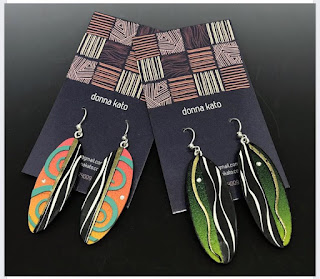Polymer Clay is the Heart Beat of Every Artist
Intended for artists and crafters, Polymer clay is a unifying and
pliable polymer compound. Since clay is composed of particles of silicate
suspended in water, it is not considered real clay. Suspended in a plasticizer
from particles of polyvinyl chloride or PVC, Polymer clay comes.
Polymer clay being different from real clay is a popular choice among
artists.
Originally, prior to curing in low temperatures, they were soft when
these clays were first produced. However, air-dry polymer clays are now
available nowadays. To one's personal liking, Kato clay makes it easier to mold
these. Afterward, at high temperatures, it can be hardened to fixate the
design.
There are basic conditioning and curing steps to follow so that in
accidental falls and in the changing conditions of weather, the finished
product will not even break. As often as one wants, Curing can be done. To
smoothen out rough finishes, it can be sanded lightly afterward.
The polymer clay is special due to its versatility. In different colors,
it is available. To make your own unique colors, you can blend paints with this
clay. Without blending them, you can also work out two or three different
color-schemes.
If rather than the plain one-colored clay you greatly prefer effects
like cane working and marbling, this is effective. The Kato matrix is
very helpful for every artist.
For glasswork, architecture, textiles, and sculpture, the pliability and
ductility of polymer clay let you use certain techniques. The fact that it does
not dry out is the best thing about polymer clays so whenever they are doing
some art forms such as sculptures, people who use it won't have to worry about
a time limit.
The process which fuses the fine particles on polymer clay into a solid
material is firing. Low heat is required for this process. To use your home
oven as a kiln, the heat must be low enough for you.
To make your art form durable objects, the clay gets solid and hard
enough. To obtain the desired textures, there are several techniques. From
glass-like to stone-like figures, Texture may range.
In many ways, Kato Polymer
clays can be used. As long as it doesn't melt or burn during the firing
process, you can actually cover anything with it. With this type of clay, you
can cover mirrors, wooden boxes, picture frames as well as tableware.
In jewelry, you will find the popular application of polymer clay. To make
bracelets, beads, pendants as well as neckpieces, this clay is used. Miniature
sculptures and Buttons are also good options.
To offer this clay other appearances such as amber, coral, granite,
ivory, turquoise, and jade, many clay artists evolved various techniques. It
can be shaped any way you want as it is very flexible.
Conclusion
Due to its surging popularity, Polymer clay is widely available
nowadays. Obviously, in the market, there is lots of polymer clay. Look in bead
shops, local craft stores, and art supply stores or online.
Author’s Bio
PrairieCraft is the first online store to serve the polymer clay
enthusiast. We fulfill the demand for better products, tools, and clay and
offer Kato tools like Kato matrix, Kato cutters and forms, Kato Polyclay, Kato
rubber stamps, and many more. Visit www.Prairiecraft.com
for details.




Comments
Post a Comment